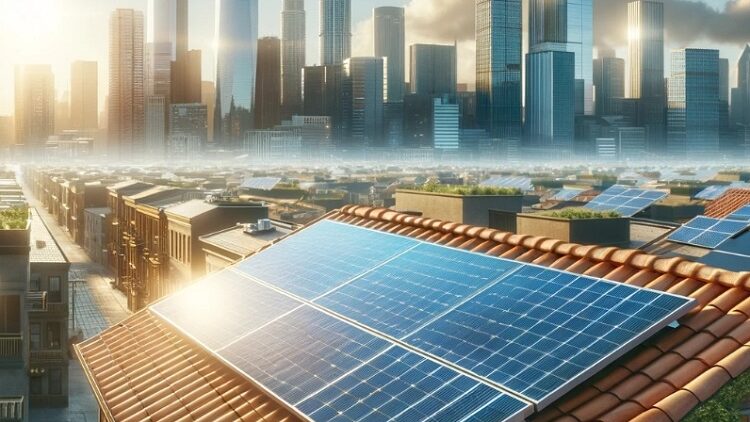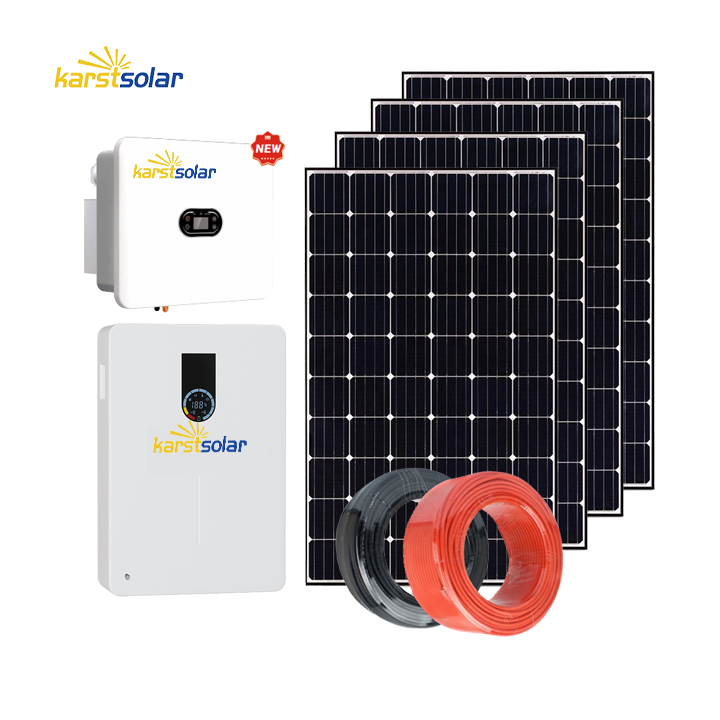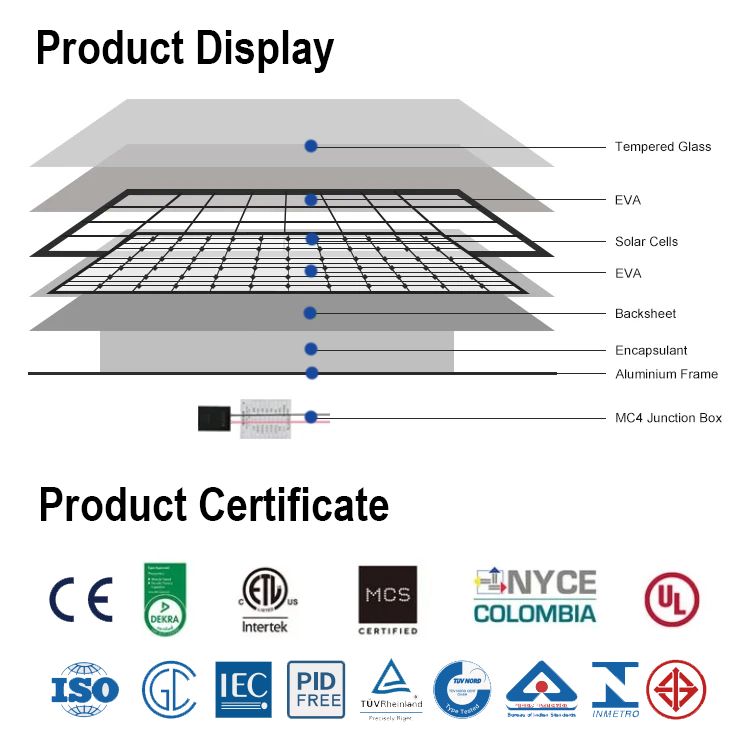Solar panels are devices that convert solar radiation energy directly or indirectly into electrical energy through the photovoltaic effect or photochemical effect. Most solar panels are made of silicon. When sunlight shines on the surface of the solar panel, some photons are absorbed by the silicon material. The energy of the photons is transferred to the silicon atoms, causing electrons to transition, becoming free electrons that accumulate on both sides of the P-N junction, forming a potential difference. When an external circuit is connected, under this voltage, current will flow through the external circuit, generating a certain output power. The essence of this process is the conversion of photon energy into electrical energy.

Calculation of solar panel power:
A solar AC power generation system consists of solar panels, charge controllers, inverters, and batteries. Solar DC power generation systems do not include inverters. To provide sufficient power for the load, various components should be selected reasonably based on the power consumption of the appliances. Here’s how to calculate it using 100W output power and 6 hours of daily usage:

- Firstly, calculate the watt-hours consumed per day (including inverter losses): If the inverter efficiency is 90%, then when the output power is 100W, the actual required output power should be 100W/90% = 111W. If used for 5 hours per day, the output power would be 111W * 5 hours = 555Wh.
- Calculate the solar panel: Based on a daily effective sunlight duration of 6 hours, considering charging efficiency and losses during the charging process, the output power of the solar panel should be 555Wh/6h/70% = 130W. Here, 70% represents the actual usage power of the solar panel during the charging process.
Solar panel efficiency:

The highest conversion efficiency of monocrystalline silicon solar energy can reach 24%, making it the highest among all types of solar cells. in terms of performance-price ratio, monocrystalline silicon solar cells are slightly better.
Lifetime of solar panels:

The lifespan of solar panels is determined by the materials of the battery cells, tempered glass, EVA, TPT, etc. Generally, panels made with better materials can last up to 25 years, but environmental factors can lead to material aging over time. Typically, after 20 years, the power output may decrease by 30%, and after 25 years, it may decrease by 70%.

Karstsolar is a professional solar panels manufacturer. We work with you back-to-back to provide high-quality and affordable solar modules. We partner with controller manufacturers, microinverter manufacturers, and bracket manufacturers. We have a strong supply chain group and provide products including solar panels, inverters, etc. Inverters, balcony systems, etc. Please reply to our email and tell us what solar product you need now and try it today: marketing@karstcom.hk

You have noted very interesting points! ps nice website.Raise your business